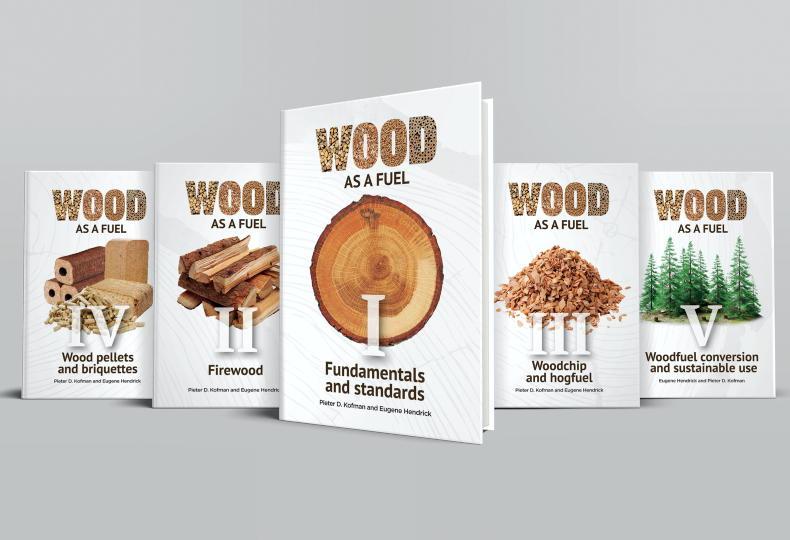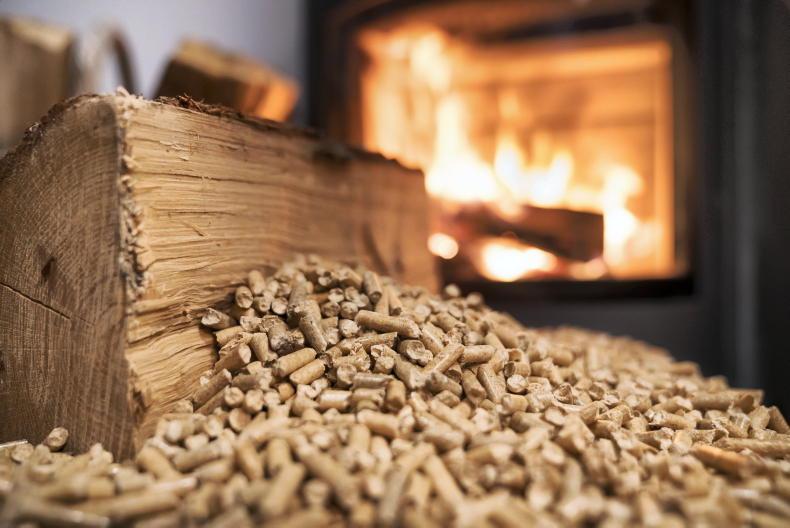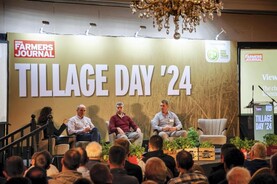Renewable energy accounts for almost 18% of global energy consumption.
Listening to some commentators, one would be forgiven for thinking that wind and solar lead the way in renewables, but the opposite is the case.
Pieter D Kofman and Eugene Hendrick, the authors of Wood as a Fuel, outline how global renewable energy consumption comprises 13% biomass (mainly wood), 3% hydro and 1% wind, while only 1% is generated from other sources including the much vaunted solar, geothermal and tidal systems (Figure 1).
Despite widespread polices and measures to support renewable energy, limited progress has been made in displacing fossil fuels. However, there is a “growing use of wood fuels within Europe and elsewhere”, claim Kofman and Hendrick. Their new five-volume publication, is a comprehensive assessment of wood as a vital renewable fuel. They cover the following subjects:
1 Fundamentals and standards.
2 Firewood.
3 Woodchip and hogfuel.
4 Wood pellets and briquettes.
5 Wood fuel conversion and sustainable use.
Fundamentals and standards
The authors outline the history of wood energy and provide the ground rules for its successful utilisation in the opening volume.
Wood energy needs to be sourced from sustainably managed forests or it can be a serious drain on the forest, especially in subsistence-level communities, claims Edward Farrell in his foreword.

Wood as a Fuel comes in five volumes, presented in a slipcase and priced at €40 with postage and packing extra.
Critics of wood energy often mistake it as the sole forest use but, as the authors point out, “Processed wood should be used according to the cascade principle.”
This includes pulpwood-based products, fencing, construction sawlog and if possible reused and recycled wood before being finally used as fuel.
They could have added furniture, panelling, joinery, craft and other high-added value uses, but the point is well made. Essentially, burning is the final use.
This section includes wood properties, woodfuels, sourcing and choosing wood for fuel, measurement, and standards and specifications. It also covers quality control and assurances, which are vital issues in gaining customer confidence and buy-in from environmentalists.
Firewood
This volume deals with the oldest form of heating although its days may be numbered in Ireland since the 2014 building regulations have virtually banned fireplaces in new houses. However, existing houses value the open fireplaces which the authors wax lyrically about, although warning buyers to choose good-quality firewood, which includes seasoned wood, and providing proper firewood storage.
Woodchip and hogfuel
Wood chip – homogenous woodchip production from roundwood – is “one of the most common wood fuels in use, particularly in developed countries”.
Hogfuel – a new term for most Irish readers – is produced by shredding wood (including roots) with blunt tools, which produces wood fuel of varying sizes.
This volume explores unit conversion and energy determination, traded forms of woodchip (by energy, weight, volume and energy processed), raw material and tree species, transportation, seasoning and drying.
It also covers purchasing bids and contracts with a section devoted to short rotation coppice.
Wood pellets and briquettes
Relatively new, wood pellets are now used in domestic and commercial heating installations where efficiency is up to 90%.
Briquettes are used mainly for domestic heating, so most of this volume is devoted to wood pellets including their production and quality, storage, pellet combustion installations, conveying systems between silo and boiler as well as silo solutions.
Conversion and sustainable use
This, the largest volume, is divided into two parts covering wood fuel conversion technologies, ash handling and embedded energy in part one, and sustainability, climate change mitigation and air quality in part two. The authors present detailed analysis of the role of wood fuel in climate change including its use and greenhouse gas balances.
They acknowledge that its socio-economic and environmental benefits can only be optimised at source through sustainable forest management (SFM) and it must be used in efficient boiler and burning systems to maximise its calorific value.
The theme of sustainability is maintained throughout all volumes as this approach “will provide permanent benefits for the environment through avoidance of fossil carbon”, the authors convincingly claim in a well argued – and well illustrated – important publication.
They leave the reader in no doubt of the crucial role of wood in the renewable energy mix and climate change mitigation as they maintain: “Woodfuel is good for the environment.”
Record log prices
The shortage of timber as a result of felling licence delays is having major benefits for forest owners lucky enough to have licences.
The prices paid for medium and large sawlog material is at a record high, according to one forestry company spokesperson. “Prices around €115/m3 and higher have been achieved for sawlog at roadside which is over €100/m3 standing,” he said. “Despite increased imports, there is still a major shortfall which we hoped would be partially filled by private supply but forest owners around the country are experiencing even more difficulties than Coillte in receiving felling licence approvals.
“That said, there is evidence that exceptionally high prices are influencing private growers to activate licences they have been holding for some time.”
One Donegal forest owner said prices have always been well below other counties due to long delivery distances to sawmills.
“This is no longer the case,” he said. “I have received an offer of €110/m3 for mainly sawlog material.”
While prices paid for finished sawmill product remain very high, in the UK, “prices of this magnitude are unsustainable in the long-term”, said one sawmill spokesperson. Coillte is also feeling the effects of prolonged delays in licence approvals as the company’s profits for 2020 halved from €60m to €30m. However, Coillte has received a much higher number of licence approvals this year compared with 2020 although a company spokesperson said activating many of these depends on road licence permits, which are still well behind schedule.
Project Woodland update
Outside independent and experienced chairs have been recruited to lead the Project Woodland working groups and have met several times since the project was established, with “good progress being shown and plans for meeting the milestones and objectives of the groups being put in place”, said a Department spokesperson. “The Department has engaged a full-time external project manager and an external systems analyst to assist with the process,” she said.
“The Department cannot name the persons … as they have not yet signed contracts,” she said. “They will be in post for the duration of the project, to support the Department in delivering Project Woodland. In addition, sanction is being sought for a full-time project director.”
Public tree felling notices
The Department has issued a statement in response to a claim by the Association of Irish Forestry Consultants (AIFC) that there is no legal requirement that the names or signatures of forest owners be displayed on tree felling public notices. It states: “The publication of names of site notices follows long-established practice in the planning process.” The statement quotes from the Forestry Act 2014 on public signage. Regarding the AIFC’s issue about the name of the owner being displayed, it states that “the minister has prescribed the form of the site notice which includes the name of the forest owner”.
Renewable energy accounts for almost 18% of global energy consumption.
Listening to some commentators, one would be forgiven for thinking that wind and solar lead the way in renewables, but the opposite is the case.
Pieter D Kofman and Eugene Hendrick, the authors of Wood as a Fuel, outline how global renewable energy consumption comprises 13% biomass (mainly wood), 3% hydro and 1% wind, while only 1% is generated from other sources including the much vaunted solar, geothermal and tidal systems (Figure 1).
Despite widespread polices and measures to support renewable energy, limited progress has been made in displacing fossil fuels. However, there is a “growing use of wood fuels within Europe and elsewhere”, claim Kofman and Hendrick. Their new five-volume publication, is a comprehensive assessment of wood as a vital renewable fuel. They cover the following subjects:
1 Fundamentals and standards.
2 Firewood.
3 Woodchip and hogfuel.
4 Wood pellets and briquettes.
5 Wood fuel conversion and sustainable use.
Fundamentals and standards
The authors outline the history of wood energy and provide the ground rules for its successful utilisation in the opening volume.
Wood energy needs to be sourced from sustainably managed forests or it can be a serious drain on the forest, especially in subsistence-level communities, claims Edward Farrell in his foreword.

Wood as a Fuel comes in five volumes, presented in a slipcase and priced at €40 with postage and packing extra.
Critics of wood energy often mistake it as the sole forest use but, as the authors point out, “Processed wood should be used according to the cascade principle.”
This includes pulpwood-based products, fencing, construction sawlog and if possible reused and recycled wood before being finally used as fuel.
They could have added furniture, panelling, joinery, craft and other high-added value uses, but the point is well made. Essentially, burning is the final use.
This section includes wood properties, woodfuels, sourcing and choosing wood for fuel, measurement, and standards and specifications. It also covers quality control and assurances, which are vital issues in gaining customer confidence and buy-in from environmentalists.
Firewood
This volume deals with the oldest form of heating although its days may be numbered in Ireland since the 2014 building regulations have virtually banned fireplaces in new houses. However, existing houses value the open fireplaces which the authors wax lyrically about, although warning buyers to choose good-quality firewood, which includes seasoned wood, and providing proper firewood storage.
Woodchip and hogfuel
Wood chip – homogenous woodchip production from roundwood – is “one of the most common wood fuels in use, particularly in developed countries”.
Hogfuel – a new term for most Irish readers – is produced by shredding wood (including roots) with blunt tools, which produces wood fuel of varying sizes.
This volume explores unit conversion and energy determination, traded forms of woodchip (by energy, weight, volume and energy processed), raw material and tree species, transportation, seasoning and drying.
It also covers purchasing bids and contracts with a section devoted to short rotation coppice.
Wood pellets and briquettes
Relatively new, wood pellets are now used in domestic and commercial heating installations where efficiency is up to 90%.
Briquettes are used mainly for domestic heating, so most of this volume is devoted to wood pellets including their production and quality, storage, pellet combustion installations, conveying systems between silo and boiler as well as silo solutions.
Conversion and sustainable use
This, the largest volume, is divided into two parts covering wood fuel conversion technologies, ash handling and embedded energy in part one, and sustainability, climate change mitigation and air quality in part two. The authors present detailed analysis of the role of wood fuel in climate change including its use and greenhouse gas balances.
They acknowledge that its socio-economic and environmental benefits can only be optimised at source through sustainable forest management (SFM) and it must be used in efficient boiler and burning systems to maximise its calorific value.
The theme of sustainability is maintained throughout all volumes as this approach “will provide permanent benefits for the environment through avoidance of fossil carbon”, the authors convincingly claim in a well argued – and well illustrated – important publication.
They leave the reader in no doubt of the crucial role of wood in the renewable energy mix and climate change mitigation as they maintain: “Woodfuel is good for the environment.”
Record log prices
The shortage of timber as a result of felling licence delays is having major benefits for forest owners lucky enough to have licences.
The prices paid for medium and large sawlog material is at a record high, according to one forestry company spokesperson. “Prices around €115/m3 and higher have been achieved for sawlog at roadside which is over €100/m3 standing,” he said. “Despite increased imports, there is still a major shortfall which we hoped would be partially filled by private supply but forest owners around the country are experiencing even more difficulties than Coillte in receiving felling licence approvals.
“That said, there is evidence that exceptionally high prices are influencing private growers to activate licences they have been holding for some time.”
One Donegal forest owner said prices have always been well below other counties due to long delivery distances to sawmills.
“This is no longer the case,” he said. “I have received an offer of €110/m3 for mainly sawlog material.”
While prices paid for finished sawmill product remain very high, in the UK, “prices of this magnitude are unsustainable in the long-term”, said one sawmill spokesperson. Coillte is also feeling the effects of prolonged delays in licence approvals as the company’s profits for 2020 halved from €60m to €30m. However, Coillte has received a much higher number of licence approvals this year compared with 2020 although a company spokesperson said activating many of these depends on road licence permits, which are still well behind schedule.
Project Woodland update
Outside independent and experienced chairs have been recruited to lead the Project Woodland working groups and have met several times since the project was established, with “good progress being shown and plans for meeting the milestones and objectives of the groups being put in place”, said a Department spokesperson. “The Department has engaged a full-time external project manager and an external systems analyst to assist with the process,” she said.
“The Department cannot name the persons … as they have not yet signed contracts,” she said. “They will be in post for the duration of the project, to support the Department in delivering Project Woodland. In addition, sanction is being sought for a full-time project director.”
Public tree felling notices
The Department has issued a statement in response to a claim by the Association of Irish Forestry Consultants (AIFC) that there is no legal requirement that the names or signatures of forest owners be displayed on tree felling public notices. It states: “The publication of names of site notices follows long-established practice in the planning process.” The statement quotes from the Forestry Act 2014 on public signage. Regarding the AIFC’s issue about the name of the owner being displayed, it states that “the minister has prescribed the form of the site notice which includes the name of the forest owner”.







 This is a subscriber-only article
This is a subscriber-only article










SHARING OPTIONS: